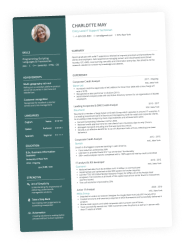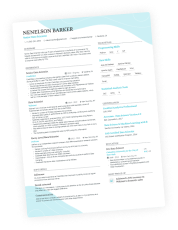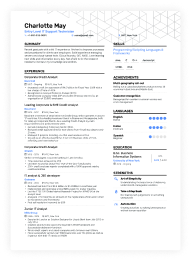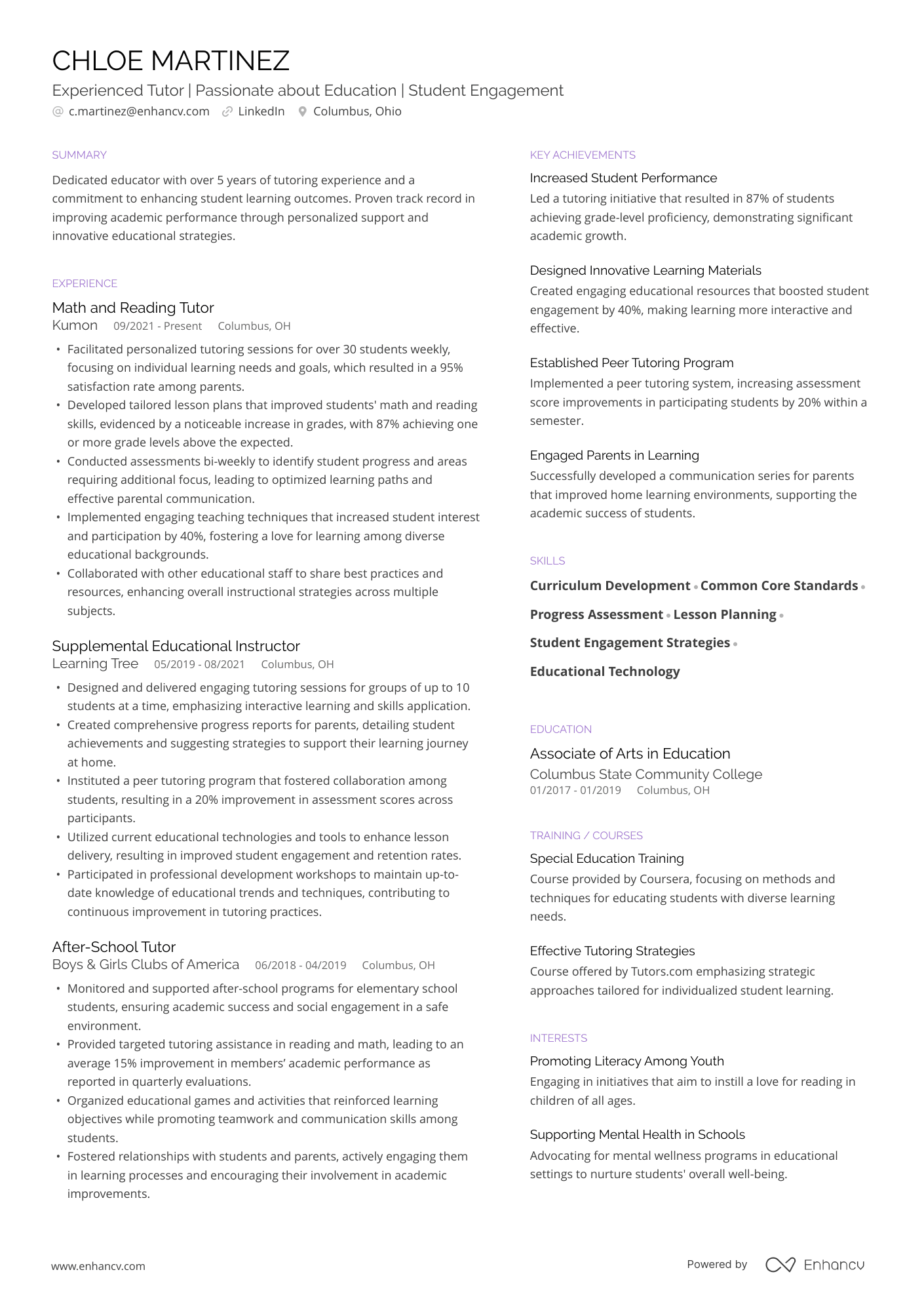In a world that’s rapidly transformed by AI, teaching is one of the few jobs that feel timeless. Whether you’re applying for a teaching role, an academic program, or even a job outside education, tutoring is a versatile experience that can always bring meaning to your life and strength to your resume.
As Certified Professional Résumé Writers (CPRWs), we know that the real challenge for many tutors is deciding how to frame their experience. Do you emphasize the measurable results, like grades and test scores, or the less tangible—but equally valuable—skills of communication, mentorship, and patience?
Why not both? That’s what our guide is about. We’ve explained how to feature tutoring experience on your resume, provided examples for the different approaches you might take, and included some common mistakes to avoid.
Let’s dive in.
Key takeaways
- Tutoring belongs on your resume because it demonstrates communication, leadership, and problem-solving skills.
- If tutoring was a paid role, place it in your experience section with clear job titles and measurable results.
- For volunteer or casual tutoring, showcase it in the volunteer/extracurricular section to emphasize initiative and community impact.
- You can also highlight tutoring in your summary and Skills sections to present transferable abilities.
- Avoid common mistakes: listing without context, overloading with detail, skipping results, or placing it in the wrong section.
- Use the Enhancv Resume Builder to create a polished resume that highlights tutoring alongside your other achievements.
If you’ve already got a resume and want to see how it scores against the ATS, give our Resume Checker a try. It’s completely free!
Is your resume good enough?
Drop your resume here or choose a file. PDF & DOCX only. Max 2MB file size.
What is tutoring (and why it belongs on a resume)
First things first–let’s explain what tutoring is and why it’s a good idea to include it in your application.
Tutoring is the practice of guiding another person through a learning process, whether that means explaining complex concepts, breaking problems into manageable steps, or providing encouragement and accountability.
It can happen in formal settings, like working with students through a school or tutoring center, or in informal ones, like mentoring peers, coaching younger students, or offering private lessons.
Tutoring resume example
If you’re wondering what a complete tutor resume looks like, check out the one below. It’s made with the Enhancv Resume Builder.
The sleek two-column template includes everything the applicant might need—a neatly organized Experience section, key achievements prominently featured, skills that target the most common keywords for the role, Education and Training sections for a quick review of the credentials, and finally, an Interests section—for a personalized touch.
Don’t forget resume formatting & ATS compatibility
Even if your tutoring experience is strong, poor formatting can hurt your chances. Keep your resume clean, simple, and ATS-friendly:
- Use standard fonts like Arial, Calibri, or Rubik.
- Stick to bullet points for clarity—avoid long paragraphs.
- Save your resume as a PDF unless the job description specifies Word.
A well-structured, easy-to-scan resume ensures your tutoring experience gets the attention it deserves.
You can modify this template and choose from our variety of sections to reflect your unique experience.
How to list tutoring on a resume
Adding tutoring to your resume may look different depending on your unique work situation. If your main role is a tutor, then tutoring can be featured as prominently as possible—throughout the different resume sections, like your experience and your summary.
But say you’ve tutored as a part-time job, or you gained valuable skills through a tutoring job that can help you land your dream role. In that case, tutoring might not be the main highlight of your application, but you still want to include it in a way that gets noticed.
So, where to list tutoring on your resume?
Experience section
As we mentioned, this is the way to go for formal, paid tutoring roles. If your main line of work is indeed teaching, then it only makes sense that the experience section is the first place recruiters will review.
Stick to straightforward, professional titles recruiters expect, such as Tutor, Math Tutor, Academic Coach, or Peer Mentor. This avoids confusion and makes your role instantly recognizable.
For every entry, structure your experience with bullets, focusing on measurable results. Tutoring may feel difficult to quantify, but there are plenty of ways to show impact:
Cheat sheet for quantifiable results on a resume
- Number of students and classes
- Students’ improved grades
- Test prep success
- How many teachers you worked with
- Solo classes taught
- Events outside of class held
If your tutoring experience took place online, don’t forget to mention the platforms and tools you used (Zoom, Google Meet, Microsoft Teams, Notion, Google Drive, Moodle, etc.). This shows recruiters that you’re comfortable with technology, can adapt to remote environments, and are able to manage digital classrooms effectively.
Not every tutor will have numbers handy. You can show soft impact through:
- Student engagement or confidence improvements
- Positive feedback from parents/students
- •Provided weekly after-school math tutoring for middle school students
- •Helped 10+ students improve their confidence and study habits
- •Organized group review sessions before state exams
When listing tutoring on your resume, clarify the type of work you did. For example:
- Private tutoring – one-on-one lessons tailored to a student’s needs.
- Group tutoring – small classes or study groups.
- Peer tutoring – supporting classmates or fellow students.
- Test prep tutoring – focused on exams like SAT, GRE, or IELTS.
Freelance or self-employed tutoring
If you’ve worked as a private tutor on your own—without being hired by a school, agency, or organization — you can still list it on your resume. The key is to present it professionally: use a clear job title, define yourself as self-employed or freelance, and emphasize the results you helped students achieve.
Volunteer section
Not all tutoring is a paid job. Maybe you volunteered at a community center, helped classmates in a study group, or mentored younger students as part of an extracurricular activity.
These experiences can still be powerful additions to your resume—especially if you’re early in your career or applying for roles where leadership and communication are highly valued.
When listing tutoring on your resume, clarify the type of work you did. For example:
- Private tutoring – one-on-one lessons tailored to a student’s needs.
- Group tutoring – small classes or study groups.
- Peer tutoring – supporting classmates or fellow students.
- Test prep tutoring – focused on exams like SAT, GRE, or IELTS.
If your tutoring was unpaid or casual, the volunteer section is the right place to list it. Use it to show initiative, community involvement, and transferable skills.
Let’s see an example:
- •Provided weekly after-school math tutoring for middle school students
- •Helped 10+ students improve their confidence and study habits
- •Organized group review sessions before state exams
Aside from your experience or volunteer sections, you can also weave tutoring into other parts of your resume.
Two of the most effective places are your summary, where you can spotlight tutoring as part of your professional story, and your skills section, where you can highlight the transferable abilities tutoring helped you develop.
Summary section
Tutoring can also fit naturally into your Resume Summary, especially if you want to emphasize transferable skills at the very top.
This is useful when tutoring isn’t your main profession, but it highlights qualities like communication, leadership, and problem-solving. In a few lines, you can show how your tutoring background makes you a stronger candidate for the role you’re applying to.
Example summary including tutoring
Dedicated professional with 3+ years of tutoring experience in math and science. Skilled at simplifying complex topics, boosting student performance, and mentoring learners of different ages. Seeking to leverage strong communication and leadership skills in a collaborative work environment.
Optimize your resume summary and objective for ATS
Drop your resume here or choose a file.
PDF & DOCX only. Max 2MB file size.
Skills section
If tutoring was more of a side activity, you can still show its value by weaving it into your skills section.
Use this approach when you want to highlight transferable abilities that apply across industries. You can list tutoring as a skill on its own, or integrate it under broader categories like “Interpersonal Skills” or “Instruction & Coaching.”
Example skills section including tutoring
- Tutoring & Mentorship – one-on-one instruction, academic coaching, peer mentoring
Communication – adapting to learning styles, explaining complex topics clearly, active listening - Educational Impact – student performance improvement, test preparation, curriculum support
PRO TIP
Your cover letter can be another great place to bring up your tutoring experience to life.
Use it to share a short story about the challenges you faced as a tutor and the impact you made—for example, helping a student gain confidence before an exam or designing a creative lesson plan that boosted results. You could also include testimonials or reference quotes from students (with permission), to make your document even more personal and memorable.
Drop your resume here or choose a file.
PDF & DOCX only. Max 2MB file size.
Common mistakes to avoid
Even though tutoring is a valuable addition to your resume, it’s easy to fall into traps that make it look less impressive than it really is. Here are some common mistakes—and how to avoid them:
Listing tutoring without context
Simply writing “Tutoring” under your experience doesn’t tell recruiters anything. Always specify who you tutored (students, peers, community), the subject, and the impact you had.
Overloading with irrelevant detail
While it’s tempting to include every student or every tutoring session, that level of detail can overwhelm your resume. Focus on highlights: number of students, subjects taught, or key outcomes.
Not showing results or skills gained
Tutoring is more than just “helping.” If your students improved grades, passed an exam, or gained confidence, mention it. And don’t forget the transferable skills you developed: communication, leadership, adaptability.
Placing it in the wrong section
Where you list tutoring matters. If it were a formal, paid role, it would belong in your Experience section. If it were volunteer work, it would fit better under Volunteer or Extracurricular activities. Misplacing it won’t necessarily hurt your credibility, but it might mean recruiters overlook it—and you won’t get the full impact of showcasing that experience.
Frequently asked questions
If you’ve still got a question or two, check out the section below.
How do you describe a tutoring job?
Describe your tutoring job by highlighting the subject taught, the students you worked with, and the results achieved. Example: “Tutored 10+ high school students in algebra, improving average test scores by 15%.”
What are the action words for tutoring on a resume?
Strong action verbs include: taught, coached, mentored, guided, facilitated, supported, developed, assessed, improved, led, and instructed. These emphasize your ability to teach, motivate, and achieve results.
Does being a tutor look good on a resume?
Yes. Tutoring shows strong communication, leadership, problem-solving, and teaching skills. Even outside education, these are highly transferable and can set you apart from other candidates.
What skills does tutoring give you?
Tutoring builds both hard and soft skills, such as subject expertise, communication, adaptability, organization, mentoring, patience, and problem-solving. These translate well to roles across industries.
Conclusion
Tutoring is more than just helping someone study—it’s proof of your ability to guide, communicate, and make an impact. Whether it was your main job, a side hustle, or a volunteer activity, the way you present it on your resume can make the difference between being overlooked and standing out.
By placing tutoring in the right section, quantifying results where possible, and connecting it to the skills employers value, you’ll turn a simple experience into a strong selling point.
Make one that's truly you.




